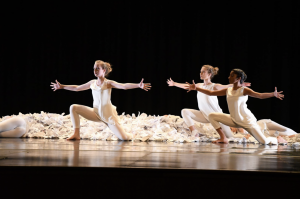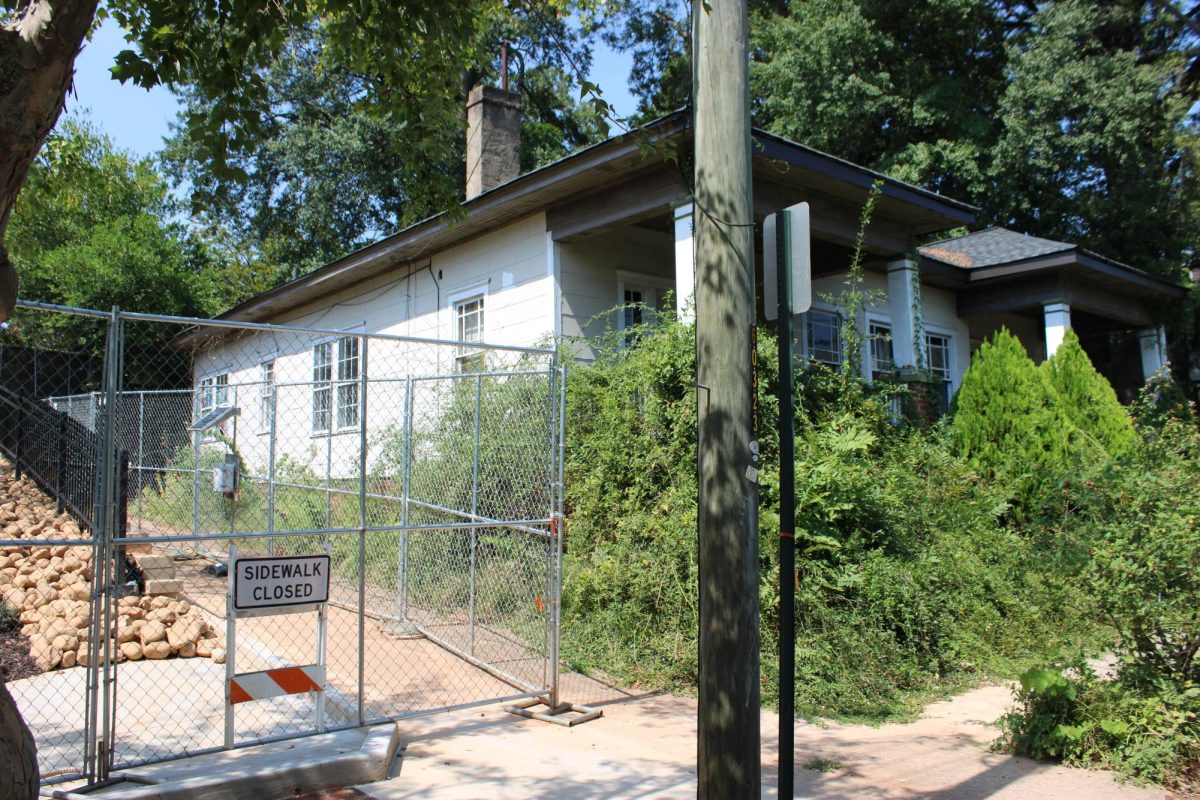Senior Kabir connects to culture with Bollywood dance
Throughout her dancing career, Kabir has learned a variety of dancing styles and has performed them at different events. “My favorite dance I have learned was called ‘Morni Banke’ from the movie Badhaai Ho, which I performed at my uncle’s wedding by myself,” Kabir said.
December 23, 2022
Hindi cinema, which is widely known as Bollywood, is the world’s largest motion picture production industry and is based in Mumbai, India. While the industry is most famous for its movies, Bollywood dance plays a crucial role in the success and popularity of such films.
Dance styles such as ballet or hip-hop are relatively popular extracurriculars for Midtown students, but few pursue Bollywood.
Senior Laila Kabir, however, has danced Bollywood since age 9 and attributes her commitment to the style of dance to her love of color and community.
“My first positive exposure to live Bollywood dancing was when I saw my friends dance in front of me for an event,” Kabir said. “My friend was in a long, studded and colorful skirt that whooshed every time she turned; it was like some type of superpower.”
Kabir appreciated the vibrant clothing, upbeat music and energetic movement of the artform. But, it wasn’t until years after witnessing her friend’s performance that Kabir realized Bollywood dance was something she could do herself.
“My mom and I stumbled across a performance piece by Shah Rukh Khan, who is known for being the king of Bollywood dancing,” Kabir said. “I asked my mom what they were doing because it seemed fun, and she explained the aspects of Bollywood dance and encouraged me to learn and try it out.”
Shohana Tuli, Kabir’s mother, admits that Kabir was uncertain to begin dancing, yet she applauds Kabir for pushing herself out of her comfort zone as it allowed her to find a new source of happiness and confidence.
“I think dancing makes her happy,” Tuli said. “I know her shyness bothers her and affects her confidence, but I am really glad dancing is a way to help her feel more comfortable expressing herself. She grew into [Bollywood dancing] after getting more immersed into the culture when we listen to the music together, as well as some of her friends being an influence, and now she loves to dance.”
Even though Kabir was hesitant to learn Bollywood dance due to the intense movements and performances, doing more research allowed her to widen her perspective and develop her interest in the art.
“I was very scared to move around how [the dancers] did until I decided to watch more music videos and movies on my own,” Kabir said. “What caught my attention was the excitement of everyone. Usually, in the stereotypical Bollywood movies with big weddings, the whole family joins together to dance. It looked amazing to be surrounded by all these people who love doing what you do.”
Before moving to Atlanta, Kabir had danced on a team primarily performing hip-hop routines. Kabir took a break from dancing, which allowed her to readjust to a new environment. During this time, Kabir became close with a South Asian community that encouraged her to continue Bollywood dance in private lessons.
“Within my family community, there are girls my age that do Bollywood dancing, so I decided to join them,” Kabir said. “There are a lot of people my age who are within the same culture as me, so we could relate to each other and created a family dance team. We go to [our instructor’s] house and learn the dance so we can perform it at a wedding or any event that is nearby that we’re all invited to.”
Practices are relatively small and range from one to five students based on which students want to perform at events. Kabir says she is grateful for the small community and has other members of her culture to connect to.
“It feels good to be with people who look like me because at our school, there aren’t many,” Kabir said. “Seeing people who deal with the same problems as me reminds me that I’m just the same as everyone else. I feel connected to the people I dance with, even our parents know each other.”
Weddings are the most frequent events that Kabir and her dance group attend and are well-liked by the performers due to the large crowds and good energy.
“We were all invited to a wedding, and we wanted to perform for the guests,” senior at North Gwinnett High School, Bollywood dance student and family friend of Kabir, Amani Mallick said. “Wedding events are pretty big, and they last a couple of days. It’s lively, and there are a lot of events going on. Everyone always joins together to sing and dance.”
Although Kabir feels nervous towards the beginning of her performances, her confidence in herself and her skill allows her to enjoy the experience of dancing in front of others, no matter the size of the crowd.
“Her feelings are understandable since the audience is very big, but I just know she gets better every time she hits the stage,” Tuli said. “You can tell she really enjoys the whole experience and at the end of the performance, she feels relieved and joyful that she did something so big. As a mother, I feel so proud that she keeps going and doesn’t want to stop performing even if she does get nervous in the beginning.”
The performers consider Bollywood dance a way to bring people of all backgrounds and ages together.
“The popular dance steps kind of become a way to socialize with others, especially at schools where people gather around to discuss how stupid the dance step is, and everybody nods their head in agreement,” senior dancer Dipesh Sinha Aggarwal said. “During events and parties, our friend group forms a circle and starts doing our thing and forces the shy friends into dancing with us.”
Kabir has brought similar inclusive ideas to school with her. As a way to expand her leadership ability and teach other students about her culture, Kabir led a dance clinic for Midtown’s Asian Student Union (ASU) where her peers were able to learn a quick, easy routine.
“Laila’s dance clinic was an amazing idea as it helps get such a beautiful part of Bengali and southeast Asian culture out to people who might not even know it exists,” ASU member Desirae Mohammad said. “Not to mention that Bollywood is something she’s passionate about, which will impact people even more.”
Kabir feels as though her dance clinic was a step in the right direction for inclusivity and cultural appreciation at Midtown and hopes that more events will be organized in the future.
“You can tell how the members were really intrigued to learn a different aspect of an Asian culture, and I admire that a lot,” Kabir said. “Everyone danced to the song really well and seemed interested to learn. I saw one of the members still dancing as they were also walking out, and it made my day. With more of these events, we can spread knowledge and culture of South Asia to both ASU and our school.”
Kabir encourages everyone to learn Bollywood dance, even if they are not of South Asian heritage. She said dance is a fun, entertaining and vibrant way to exercise while expanding one’s global perspective.
“Dance is something that keeps my mind off of everything else; I don’t even think of it as an extracurricular; I think of it as a pastime,” Kabir said. “To people that are interested in learning Bollywood dance, I would recommend trying it out. It is a fun experience to dance to songs that radiate a lot of good energy, with fast beats and tons of fast movements while learning about something new.”










